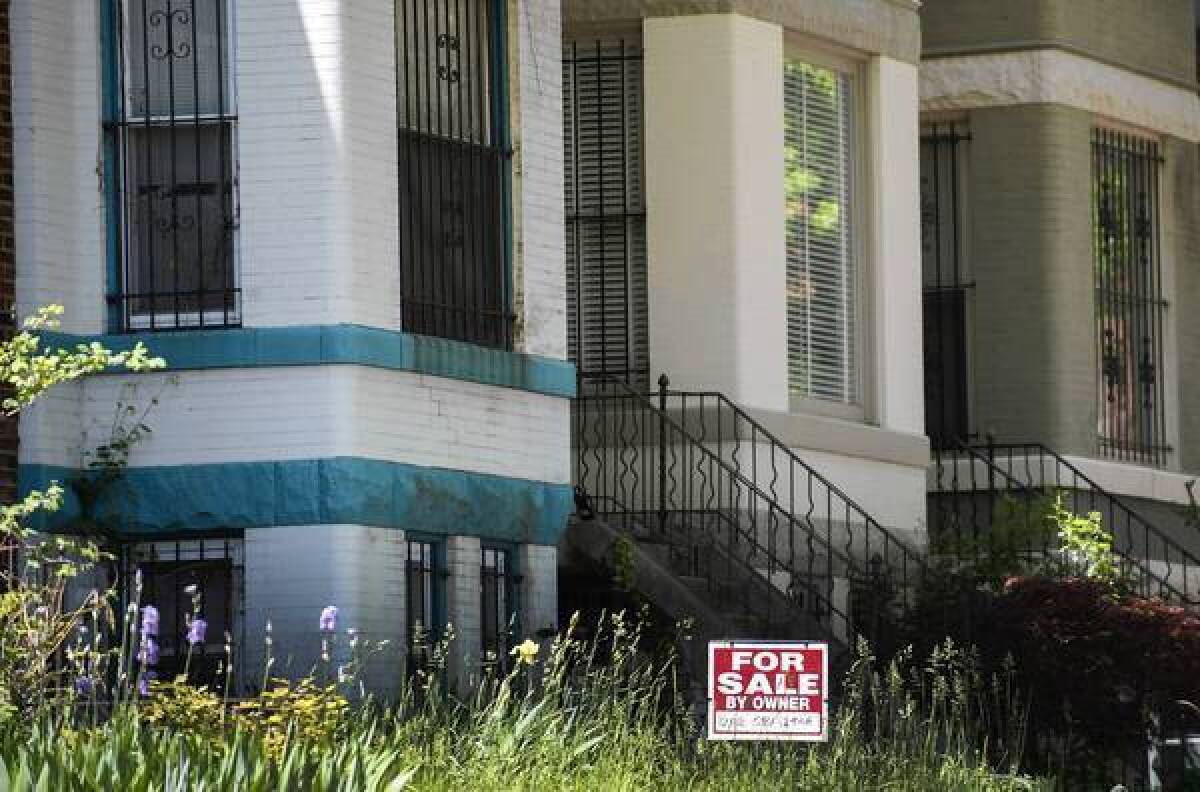Some homes are slow to sell even in the hottest markets

- Share via
WASHINGTON — With full-fledged sellers’ markets underway in dozens of metropolitan areas around the country, new research has found curious statistical patterns emerging: Even in cities where listings get multiple offers within days or hours, significant numbers of homes are sitting on the market for six months, 12 months or more with no takers.
Call them turnoff listings. Despite roaring sales paces all around them, for one reason or another these houses send shoppers scurrying away, often because of mispricing, excessive restrictions on access to buyers and agents, failure to clean or make repairs and a variety of other marketing bungles.
Researchers at Trulia, a real estate listings site, say the existence of large numbers of unsold houses in the midst of high-activity markets is more common than generally assumed. Jed Kolko, chief economist for Trulia, suggested that “even in the tightest markets, there is a ‘long tail’ of homes languishing” unsold for extended periods.
For example, in one of the fastest-paced sales areas in the country, San Jose — where the median time from listing to sale is just 20 days — one out of 10 houses has been on the market for 161 days or more. In metropolitan Boston, where houses go from listing to sale in a median 42 days, 10% go unsold for 257 days or more.
Data provided for this column by MRIS, the multiple listing service covering metropolitan Washington, D.C., indicate that in the hottest neighborhoods, houses sell in a median five to 12 days. Yet from 10% to 12.5% of listings in some areas sit without buyers for six months or more.
Nationally, according to new data from the National Assn. of Realtors, 44% of all new listings take 90 days or more to sell, 22% take six to 12 months and 9% take more than a year.
Why the glacial pace for certain homes in even the fastest-moving sellers’ markets? Realty agents who visit houses with potential buyers in tow aren’t shy about sharing the major reasons. One agent, Jeff Dowler of Solutions Real Estate in Carlsbad, Calif., says more often than not, the root problem is the owners of the property. As he guides shoppers from one listing to another, “I see homes being sabotaged by owners all the time.”
Sabotaged? Not intentionally, says Dowler, but by “doing things or not doing things that would make the house easier to sell.” Demanding an unrealistically high asking price — and refusing to negotiate on lower but qualified offers — is the top turnoff for Dowler and many other agents showing homes.
Imposing severe restrictions on when and by whom the house can be shown is another. For example, sellers who will only allow showings between 10 a.m. and noon on Saturdays, or who require a 24-hour advance notice before appointments to show during the week, or who won’t let anyone in unless they or the listing agent are present, inevitably delay offers and sales.
Patricia Kennedy, an agent with Evers & Co. in Washington, D.C., recently blogged on ActiveRain, a real estate site, about “annoyingly inflexible” restrictions: “What? You want to show my house in a half-hour? Sorry, but I’m covering my gray. Go away!” But, wrote Kennedy, “if I can’t show it, I can’t sell it. Sorry. If you’re a pill about showings, you are sending the buyer’s agent a message that you’ll probably be a pill throughout the transaction!”
Other big turnoffs:
•Poorly cleaned, messy houses with obvious deferred maintenance.
•Sellers who insist on being present — or hover nearby — when shoppers visit so they can point out every feature they improved or like. Better for sellers to be out of the house or out of sight.
•Smells inside the house that are either bad — especially from dogs, cats and other pets — or come across as contrived, such as scented candles, potpourri plug-ins, etc. When buyers encounter obviously artificial smells they wonder: What are the owners covering up?
Just because houses are selling fast in your area doesn’t mean yours will. You’ve got to think of it as a product you’re marketing, not just as your home. Get it in shape to sell. Price it realistically. Be flexible and cooperative on showings and negotiations. Unless it has grossly off-putting features — costly physical defects, ugly design, bad location, bad schools — your property should sell.
Distributed by Washington Post Writers Group
More to Read
Inside the business of entertainment
The Wide Shot brings you news, analysis and insights on everything from streaming wars to production — and what it all means for the future.
You may occasionally receive promotional content from the Los Angeles Times.










